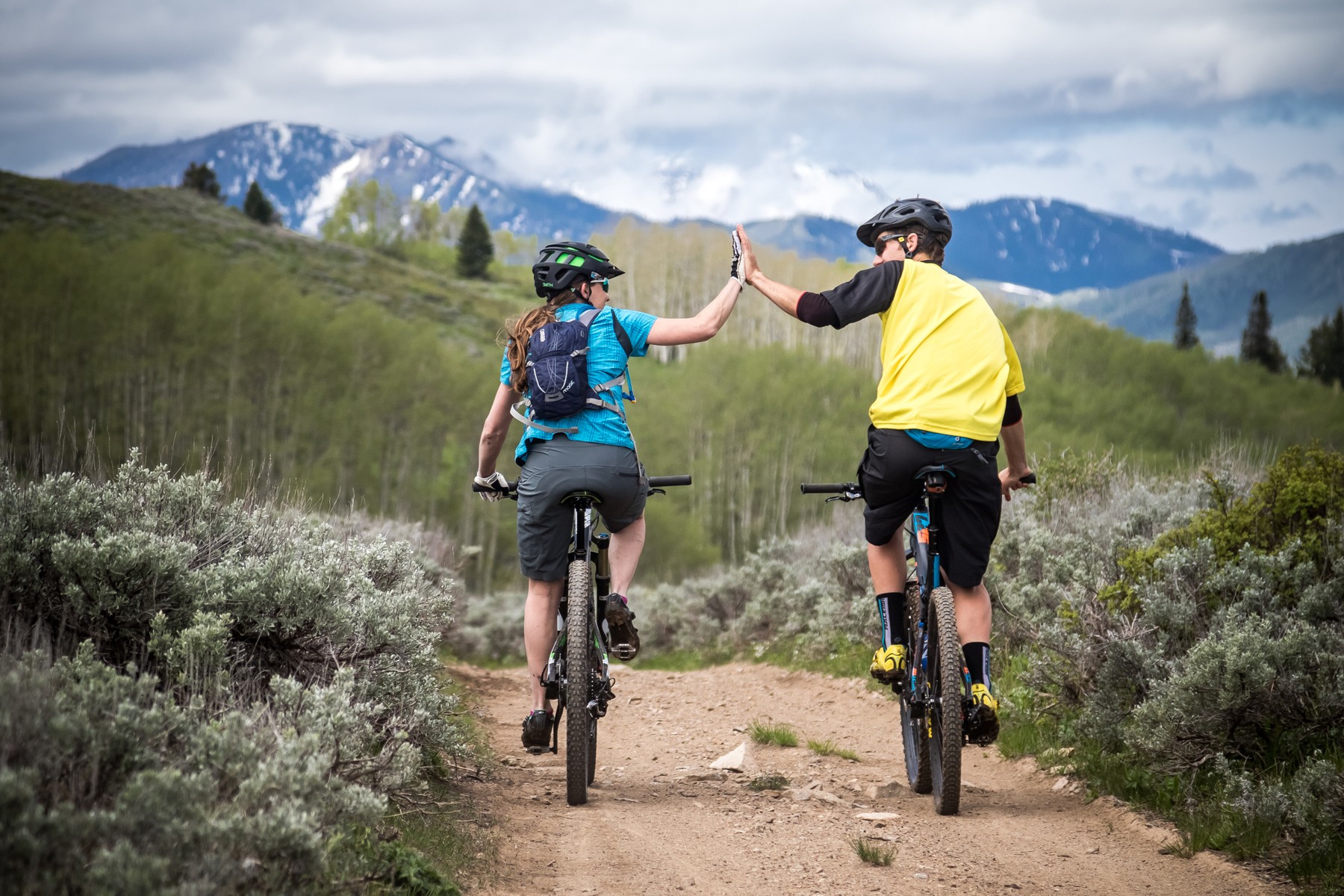Mountain biking is the perfect off-season parallel to skiing, combining speed, adventure, and a way to spend time in the high alpine. However, it also comes with its share of risks. As a physical therapist, I’ve teamed up with University of Utah Health to share insights on preventing both traumatic and overuse mountain biking injuries. University of Utah Health expertise in bike fitting and physical therapy can help you enjoy your rides safely and efficiently to make the most out of this summer!
Traumatic vs. Overuse Injuries
Traumatic injuries are sudden and often severe, typically resulting from accidents or falls. The majority of these injuries occur when riders fall forward, especially while riding downhill, which indicates an increased injury severity score. Here's a closer look at the most common traumatic injuries in mountain biking and how to prevent them. Conversely, overuse injuries develop gradually due to repetitive stress and improper biomechanics. These injuries are often related to improper bike fit and can be prevented with proper adjustments and conditioning. Here are some common overuse injuries in mountain biking and how to prevent them.
Common Traumatic Injuries
Traumatic injuries in mountain biking commonly affect the spine, head, and upper extremities. Approximately 74% of spine injuries involve the cervical spine. Head injuries include concussions, skull and facial fractures, cerebral contusions, dental trauma, and intracranial hemorrhage. Upper extremity injuries often present as lacerations and abrasions, requiring prompt cleaning and treatment to prevent infection.
Lower extremity injuries are less common but do occur, particularly among downhill (DH) cyclists, who experience significantly higher injury rates compared to cross-country (XC) cyclists. Mountain bike terrain parks also report high acute injury rates, with male riders being the majority of those injured. Predictive factors for increased crash risk include a history of prior crashes, riding in the dark, and riding in groups.
Preventative Measures to reduce the risk and severity of traumatic injuries
Wearing helmets, mouth guards, and knee pads is crucial for protecting against traumatic injuries. Helmets are essential for preventing head injuries, mouth guards protect against dental trauma, and knee pads offer additional protection for the lower extremities. Additionally, riders should be aware of their surroundings and avoid high-risk situations such as riding in the dark or in large groups.
Common Overuse Injuries and Prevention
Low Back Pain: This is often caused by improper bike fit, poor hamstring and hip flexor length, weak transversus abdominis, and incorrect pelvic tilt. Prevention strategies include ensuring proper bike fit, performing postural corrective exercises, and engaging in dry needling, myofascial release techniques, and mobilization/manipulation with physical therapy.
Neck Pain: Weakness and fatigue of cervical stabilizers, increased thoracic kyphosis, and improper posture can lead to neck pain. To prevent this, strengthen cervical spine stabilizers, improve posture, use lighter helmets, and avoid attaching cameras to helmets.
Ulnar/Median Nerve Neuropathy: Nerve compression where hands meet the handlebars can lead to paresthesia, pain, or weakness in the fingers. Preventive measures include improving bike fit, using padded gloves, correcting postural habits, reducing ride length, and lessening weight on the hands. Persistent symptoms should be evaluated by a physical therapist for other contributing factors such as double crush syndrome and thoracic outlet syndrome.
Knee Pain: Various conditions like patellofemoral pain syndrome, IT Band Friction Syndrome (ITBFS), and patellar tendinopathy can cause knee pain. Preventive strategies include adjusting saddle height and position, increasing pedaling cadence, using proper footwear, and addressing foot mechanics.
Achilles Tendinopathy: This results from repetitive plantar flexion, gastrocsoleus shortness, and improper saddle height. Prevention involves stretching the gastrocsoleus muscles, adjusting saddle height, and using appropriate footwear.
Genital/Saddle Area Injuries: Common issues include genital numbness, erectile dysfunction, and perineal dermatologic problems. Prevention strategies focus on proper bike fit, choosing the right saddle type, reducing riding volume, maintaining healthy body weight, and consulting a pelvic floor physical therapist.

Bike Fit for Overuse Injury Prevention
Adjusting the bike to fit the rider properly is crucial in preventing overuse injuries. A low saddle height can lead to patellofemoral pain syndrome, while a high saddle height can cause hamstring injuries. Saddle setback should align the greater trochanter with the seat tube for proper posture. Additionally, using appropriate insoles and wedges can address knee varus or valgus, and adjusting cleat rotation can help with knee issues.
University of Utah Health for Bike Fitting and Physical Therapy
For those seeking professional assistance with bike fitting, the University of Utah Health Orthopedic Center offers expert services at their Cyclist's Clinic. Proper bike fitting can prevent many overuse injuries by ensuring that the bike's setup matches the rider's biomechanics. Moreover, physical therapy plays a crucial role in treating and preventing overuse and traumatic injuries. Physical therapists can help address biomechanical issues, offer postural corrective exercises, and provide treatment for both traumatic and overuse injuries sustained while mountain biking.
By understanding the common causes of both traumatic and overuse injuries and implementing these preventative strategies, mountain bikers can enjoy their rides while minimizing the risk of injury.
Content produced in partnership with University of Utah Health
References:
-
Ansari, Majid MD1; Nourian, Ruhollah MD1; Khodaee, Morteza MD, MPH, FACSM2. Mountain Biking Injuries. Current Sports Medicine Reports 16(6):p 404-412, 11/12 2017. | DOI: 10.1249/JSR.0000000000000429















